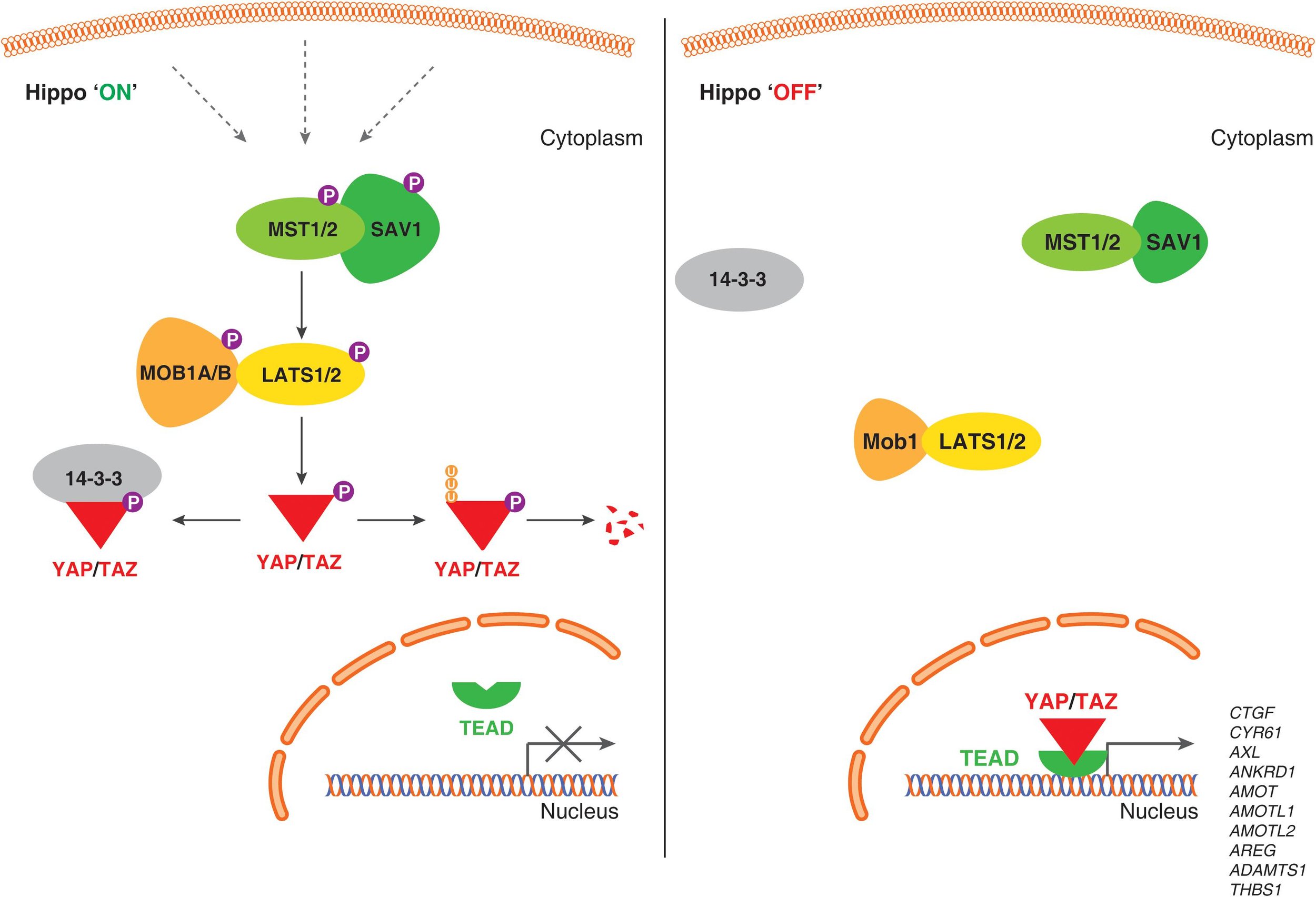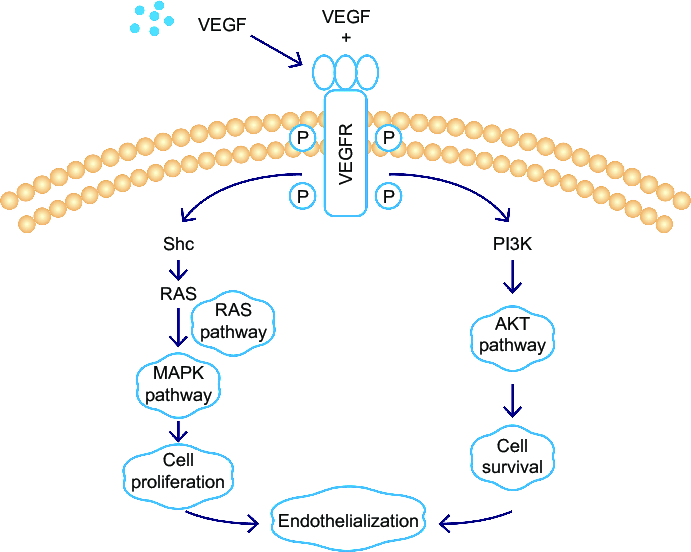What is YAP and its significance for ALK-positive cancer
In recent years, a signal pathway called HIPPO, which is important in angiogenesis (blood vessel growth), has become important for the ALK cancer realm. There has been accumulating evidence that a protein called YAP (Yes Associated Protein-1) can prevent TKI-resistant cells from developing resistance in vitro and in vivo (in laboratory experiments and in cell experiments).
This pathway is very important as there is evidence that it is very well-preserved in evolution - there are homologs to humans in Drosophila (fruit flies). Many of the known players in the pathway were found in genetic experiments in Drosophila, and the homologs are often referred to as funny names such as Yorkie (YAP-1 homolog).
A quick summary of this pathway:
The main players are MST 1 & 2 (Mammalian sterile-20 related 1 & 2), SAV1 (Salvador), MOB1A/B (MOB kinase activator 1A & 1B) and LATS 1 & 2 (Large tumor suppressor 1 & 2). Many of these proteins contain serine or threonine that can be phosphorylated. When these proteins have been phosphorylated at the serine or theornine sites, a symbol (P), in purple, is indicated on the left side (the ‘On’ mode). So, when this HIPPO pathway has been turned on, MST1/2, SAV1, MOB1A/B, and LATS1/2 are all phosphorylated, leading to YAP being kept in the cytoplasm. In the ‘Off’ mode (on the right), YAP is translocated into the nucleus to alter the transcription of many genes. The symbol (U), in orange, means that the protein can be ubiquitinated (add an ubiquitin), destined to be destroyed by the cell. The localization of YAP is important to its function.
Yun et. al published a paper (10/2019) providing evidence that ALK-resistant cells look morphologically different, which could be due to YAP nuclear localization leading to structural differences. Statins, the medication used in treating high cholesterol, can overcome YAP by blocking its downstream targets.
As with all pathways that occur in the cell, this pathway is very complex and interacts with many other signals.
This figure from the authors Boopathy and Hong (2019) describes such interactions. There might be inter-talks between HIPPO and the EGFR pathway (HIPPO may activate a receptor for EGFR and HIPPO can be activated by EGFR via MAPK pathway) to affect cellular integrity and adhesion.
VEGF, a classic signal transduction pathway in angiogenesis, also uses YAP and parts of the HIPPO pathway as a method to activate angiogenesis.
This figure depicts the interplay between angiogenesis and other cellular functions such as cell survival and cell proliferation. These signals may be regulated and controlled by similar signals such the MAPK pathway and/or RAS pathway. SHP2, which many of us have heard of, is working in the RAS pathway.
Dr. Shaw recently discussed that Novartis is currently working on YAP inhibitors as monotherapy. If those experiments are proven successful, she can imagine using YAP inhibitors in combination with an ALK inhibitor to treat ALK cancers in the future.
There are other combinations in clinical trials at this time: ALK TKI and MEK combination (which hits the MAPK pathway), ALK TKI and MET combination, and ALK TKI and SHP2 combination (which hits the RAS pathway).
Search for a clinical trial close to you: https://www.clinicaltrials.gov/.
https://www.nature.com/articles/s41467-019-13771-5
https://www.embopress.org/doi/full/10.15252/emmm.201910581
Front. Cell Dev. Biol., 10 April, 2019 | https://doi.org/10.3389/fcell.2019.00049
Author: Alice Chou



